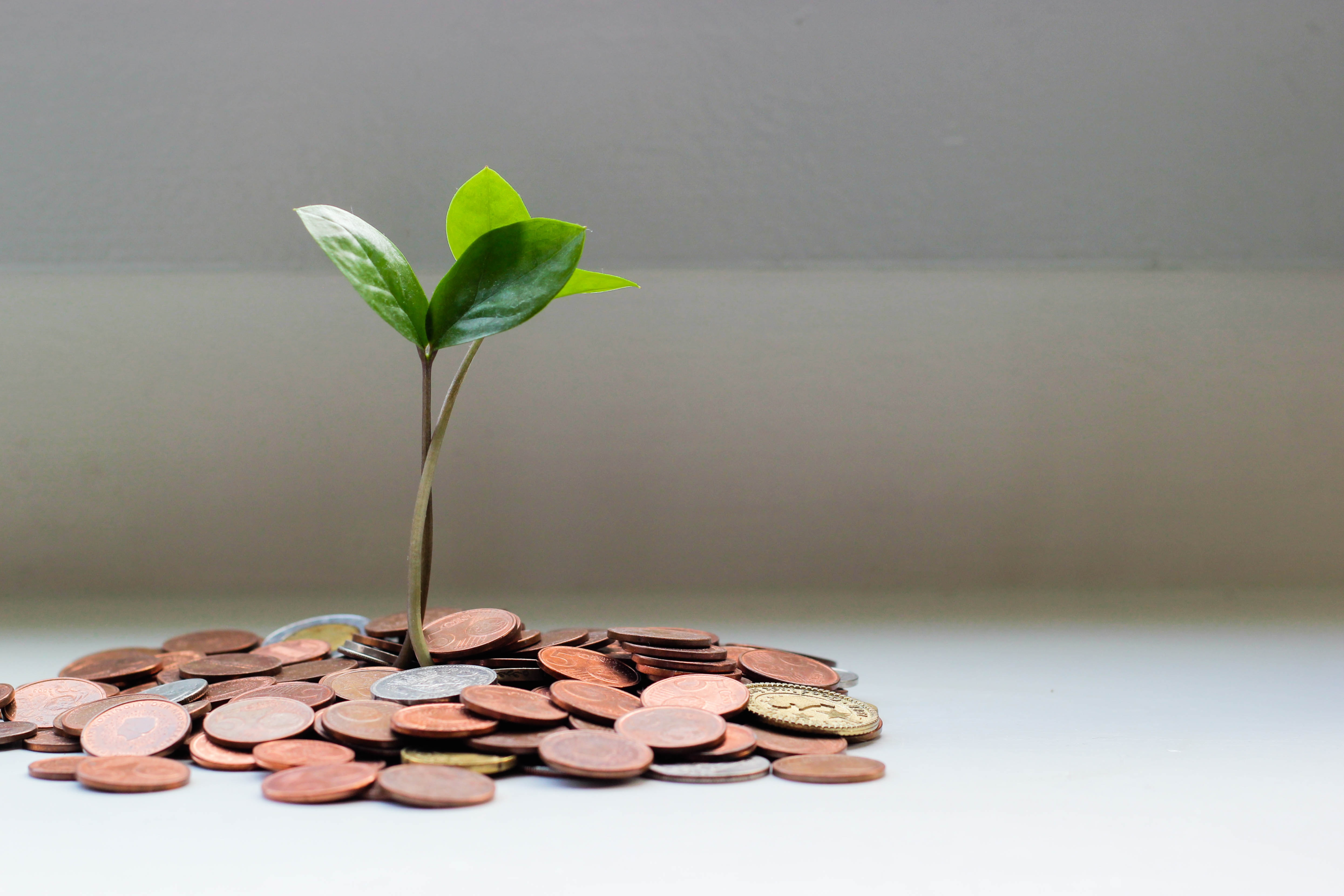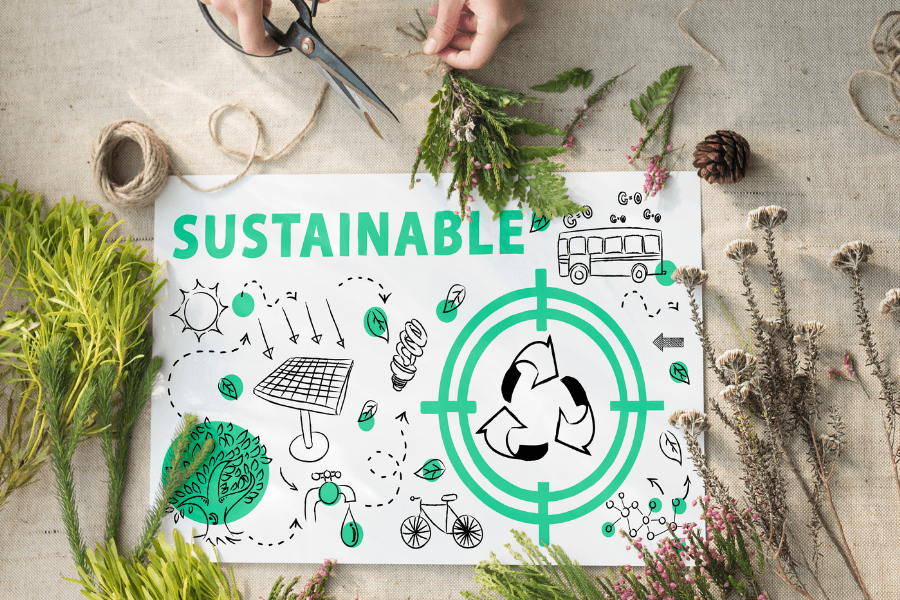Over the past few years, sustainability has developed as an important idea in a variety of sectors, and the real estate industry is no exception to this phenomenon. Incorporating environmentally conscious company procedures into the process of developing real estate has become necessary in light of the expanding concerns over environmental deterioration and the requirement to find solutions to the problem of climate change.

The purpose of this article is to shed light on the significance of sustainability in the real estate sector in the Philippines by examining its benefits, difficulties, and potential solutions for a greener future.
What is sustainability?

Sustainability, at its heart, is the practice of building a better future for present and future generations. It entails striking a balance between ecological preservation, human rights, and economic development.
Suppose we lived in a world with fresh air, clean water, and stunning natural scenery. That’s the ultimate goal of environmental sustainability. It’s about taking care of Earth, preventing extinctions, and limiting waste in the areas of energy, water, and materials consumption.
3 Pillars of Sustainability
Sustainability can also be referred to as the three dimensions or the triple bottom line. Social, environmental, and economic sustainability are the three pillars that make up sustainability. These pillars give a framework for solving the interconnected sustainability issues of providing present demands without compromising the ability of future generations to meet their own needs. For example, one of the challenges is to ensure that future generations will be able to meet their own needs. Let’s analyze each pillar in greater detail:
1. Environmental Sustainability

The concept of environmental sustainability refers to the sustainable practices of safeguarding and retaining the natural environment for the benefit of both present and future generations. In its most basic form, sustainability can be seen as the conservation of natural resources for the purpose of sustaining the balance of the environment.
In addition, it refers to a more comprehensive attempt to fulfill our environmental, economic, and social needs without harming the capacity of future generations to do the same for themselves.
It implies keeping an awareness of how our actions affect the planet and taking measures to lessen the impact and environmental issues. It entails lowering pollution levels, reducing usage of fossil fuels, preserving renewable energy and conserve water, reducing waste and fostering the adoption of sustainability practices in our day-to-day activities.
Sustainability in environmental practices involves appreciating and safeguarding biological diversity, making effective use of renewable resources, and repairing and rebuilding ecosystems. It is about finding ways to coexist peacefully with the natural world and acting as responsible stewards of the earth that serves as our sustainable homes.
2. Social Sustainability
Imagine a society in which everyone has access to the same opportunities or having social equity, in which communities thrive, and in which the overall well-being of all people is a top concern. Creating societies that are equitable, just, and welcoming to all members of society is central to the concept of social sustainability. It includes making sure that people have access to fundamental necessities such as food, a roof over their heads, medical care, and education.
It is about fostering gender equality, respecting and appreciating variety, and creating living conditions that are both safe and healthy for residents. Caring for one another, encouraging one another, and cooperating in order to construct communities that are robust and able to withstand adversity are all aspects of social sustainability.
3. Economic Sustainability

Consider an economy that not only generates prosperity but also takes into account the well-being of people and the environment. Economic sustainability entails establishing a system that fosters long-term prosperity and resilience. It entails encouraging companies to prioritize ethical principles, fair trade, and responsible production.
Economic sustainability entails promoting job creation, innovation, and entrepreneurship while ensuring that resources are used in an efficient and sustainable manner. It is about investing in green technologies, renewable energy, and sustainable agriculture.
Economic sustainability is the recognition that economic development should benefit everyone, ensuring that money and resources are allocated equitably and that future generations can also benefit economically.
It also involves promoting responsible business practices, encouraging innovation and entrepreneurship, supporting employment creation, ensuring fair trade and various investing practices, and promoting economic diversity. Incorporating the upfront costs of resource use and environmental impacts into economic decision-making via tools such as valuing ecosystem services and implementing sustainable finance and investing strategies is also required.
Understanding Corporate Sustainability
When applied to business, the term “sustainability” can relate to more than just being environmentally conscious. Sustainable green business practices make sense when considering the impact that a company has on society as well as the impact that a company has on the surrounding environment, with the end goal of sustainable practice being to have a positive impact on at least one of those spheres of influence.
This perspective on responsibility motivates firms to strike a balance between maximizing their long-term benefits and their short-term returns, with the end goal of pursuing goals that are both environmentally sustainable and inclusive. This encompasses a wide variety of methods that could be used.
In order to make progress toward sustainability, a company could, for example, reduce their emissions, cut their energy usage, source their goods from organizations that support fair trade, and make certain that their garbage is disposed of in an appropriate manner while leaving a smaller carbon footprint.
Companies have also established sustainability goals such as a commitment to zero-waste packaging by a given year or to cut overall emissions by a certain percentage. These goals can be broken down into more specific measures.
In the broadest sense, a corporation can apply sustainable practices by lowering the amount of limited resources that it consumes or by locating alternative sources of those resources that have, for instance, fewer negative environmental impact.
Sustainability and Real Estate
When discussing real estate, the term “sustainability” refers to the incorporation of ecologically and socially sustainable practices across the property’s whole lifecycle, beginning with its planning and construction and continuing through its operation and final disposal.
Sustainability in real estate entails doing as little damage as possible to the surrounding environment, fostering energy efficiency, and taking into consideration the health and safety of both the building’s residents and the community at large.
The following are some essential components of environmentally responsible real estate:
1. Green Building Design
The design phase is where sustainable real estate practices first emerge. The concepts of green building emphasize the creation of structures that use as little resources as possible, generate less waste, and make the most efficient use of energy. This may involve the implementation of effective insulation and ventilation systems, as well as the use of environmentally friendly building materials and the incorporation of renewable energy sources. Green buildings also contribute to community resilience in the face of climate change.
Thus, the purpose of a green building initiative is to provide assistance to asset owners and building owners in being ecologically responsible and making effective use of resources.
2. Energy Efficiency
Implementing energy-efficient technologies and practices is one of the primary goals of sustainable real estate development, with the secondary goal of lowering carbon emissions. This may include the use of energy-efficient appliances, LED lighting, intelligent building management systems, and renewable energy sources like solar panels or geothermal heating and cooling systems.
3. Water Conservation
Water conservation is one of the tenets of sustainable real estate, which can be promoted through a variety of approaches, such as the installation of water-saving fixtures, the implementation of rainwater collecting systems, and the use of efficient irrigation methods for landscaping. If you use as little water as possible, not only will you lessen the burden on the water supplies in your area, but you will also save money on your utility bills.
4. Waste Management
The sustainable operation of a real estate industry requires the implementation of effective waste management methods. This includes sustainability practices such as recycling construction added materials, adopting waste sorting, recycling and sustainability program for tenants, and employing environmentally responsible waste disposal methods to reduce the amount of garbage that is contributed to landfills.
5. Indoor Environmental Quality
The health and happiness of building residents is given the utmost importance in environmentally responsible real estate development. This requires the use of multiple buildings materials with a low level of toxicity, the provision of high-quality air through the installation of appropriate ventilation systems, the incorporation of natural lighting, and the consideration of elements including acoustics and thermal comfort.
6. Community Engagement
In sustainable real estate, the social impact of a property on the community in which it is located is also taken into consideration. This may include the implementation of programs that encourage local community participation, the promotion of walkability and access to public transportation, the support of local businesses, and the creation of common areas that encourage social contact.
7. Long-Term Sustainability
A sustainable approach to real estate requires taking a long-term view and taking into account the continuous operations and maintenance requirements of a facility. This comprises the management of the facility in an effective manner, conducting energy audits on a regular basis, and conducting lifecycle assessments to identify areas for improvement and maximize performance.
Not only are there positive effects on the environment, but there are also positive effects on the economy when sustainable real estate techniques are used. Sustainable buildings that are efficient in their use of energy typically have reduced energy costs, operating costs, higher market values, and more attractiveness to tenants and investors that are environmentally concerned.
In a nutshell, sustainability in real estate refers to the process of designing and constructing sustainable buildings that are good for the environment, wise stewards of their resources, and conducive to human health, all while making a beneficial impact on the community around them just like in Asterra. It is a rising focus within the real estate business as more stakeholders acknowledge the value of minimizing environmental damage and promoting social well-being in property creation and maintenance. This is a growing focus within the real estate industry as more stakeholders recognize the relevance of it.
Benefits of Sustainability in Real Estate
Sustainability provides numerous advantages in a variety of sectors and industries such as in real estate. Here are some of the primary advantages of implementing sustainable development practices:
1. Environmental Conservation
The use of sustainable practices helps reduce the adverse environmental impact, such as the depletion of resources, pollution, and the destruction of habitat. Sustainability makes a contribution to the long-term health and well-being of the world by preserving ecosystems, cutting down on emissions of greenhouse gases, and conserving other resources in our planet.
2. Cost-Saving
Even though sustainable new technologies and practices may require a larger initial financial outlay, there is a good chance that these investments will pay off in the long run. Buildings that are more energy efficient, for instance, use less energy overall, which results in lower monthly power bills. In addition, environmentally responsible activities such as minimizing trash and cutting costs for water use might eventually result in lower operational expenses.
3. Enhanced Property Value
Real estate developments that minimize their impact on the environment typically fetch a percentage rises in price and are in higher demand. Tenants, purchasers, and investors are increasingly interested in investing in environmentally friendly and energy efficient buildings because they see the long-term benefits of lower operating costs, increased occupant comfort, and a smaller overall impact on the environment. The marketability of a piece of real estate can be improved further by the attainment of various green certification such as being LEED certified or receiving BREEAM.
4. Improved Occupant and Productivity
The health and comfort of the people living or working in a building are given first priority by sustainable design features such as improved air quality, increased access to natural light, and temperature control. It has been demonstrated that the presence of these elements contributes to an increase in occupant health, comfort, and productivity. Residents in a real estate adapting sustainable development benefit from a higher quality of life because, in part, to the presence of green homes and other facilities.
5. Innovative and Competitive Advantage
The pursuit of sustainability helps promote innovation by fostering the creation of new technologies, materials, and processes and facilitating their widespread adoption. Businesses that are seen to be leaders in their fields by adopting sustainable practices are more likely to be successful in luring consumers, investors, and top talent to their ranks. Companies have the opportunity to acquire a competitive advantage and position themselves for long-term success if they remain on the cutting edge of sustainability trends.
6. Regulatory Compliance and Risk Mitigation
Environmental standards and sustainability programs are increasingly being implemented by governments even world commission and the United Nations. Businesses and organizations can assure compliance with these requirements and avoid the risk of penalties, legal challenges, and reputational damage by embracing eco friendly practices.
Final Thought

The concept of sustainability is more than a passing fad or catchphrase; rather, it entails both a mentality and a way of life that combat climate change. It is necessary for us to make deliberate decisions in our day-to-day lives, such as recycling, reducing our energy consumption, and supporting businesses that have an emphasis on sustainable development. In addition to this, it requires cooperation and participation from all facets of society, including individuals, corporations, and local governments.
In the end, sustainability efforts means acting as responsible stewards of our planet and working toward the creation of a future in which everyone may live peacefully and in harmony with one another. It is crucial that we raise awareness to promote sustainable development as it is our essential role to take care of our world. It is an endeavor on everyone’s part to co-create a future that is cleaner, more equitable, and more prosperous for everyone.





